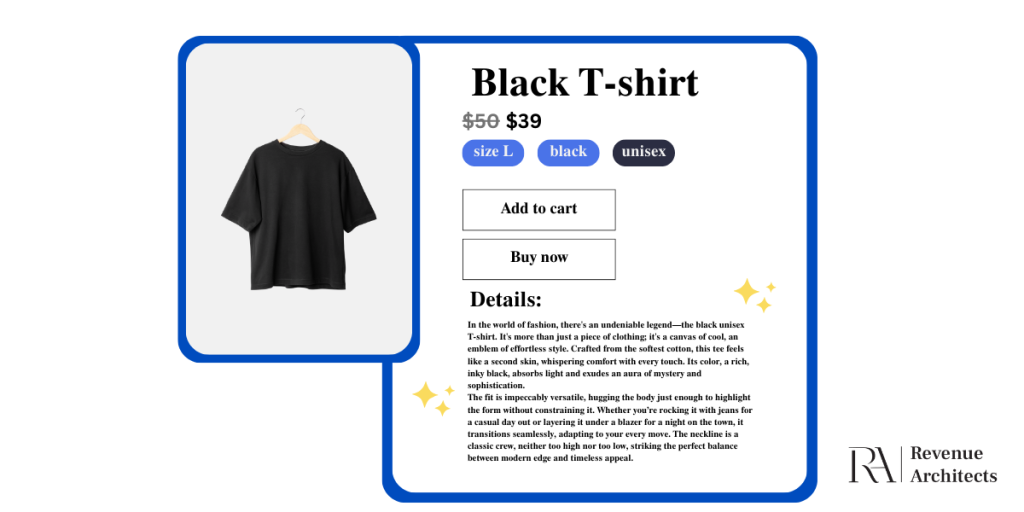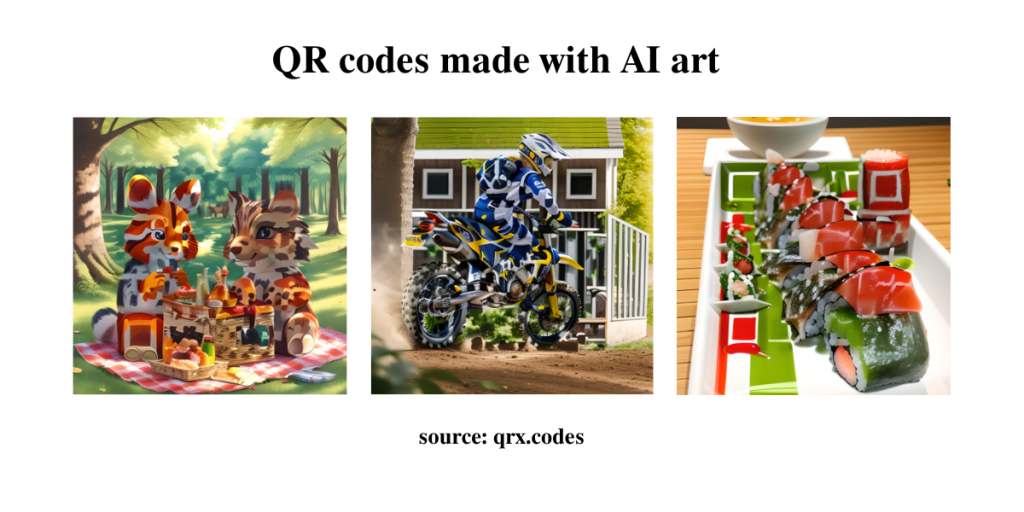Generative AI holds the potential to revolutionize marketing and selling while blending personalization with efficiency to create captivating customer experiences that foster brand loyalty. This technology’s future possibilities are not just promising but inspiring, and we are only beginning to grasp its full application scope.
The AI revolution, which initially focused on automating repetitive tasks and digitizing traditional methods, is now poised to transform the essence of marketing.
This overview presents seven practical examples of generative AI in action, serving as a tool that’s reshaping the marketing landscape. From optimizing content creation to enhancing customer engagement with augmented reality, these examples demonstrate how AI’s diverse capabilities can deliver faster, smarter, and more creative solutions.
The sales team’s role here is to understand what marketing teams are capable of and use this to their advantage. This can help sales teams move MQLs to SQLs faster and better understand customer journeys.
Let’s dive into this never-ending pool of generative AI possibilities!
1. Generative AI for E-Commerce: Product Descriptions
Creating product descriptions for an extensive catalogue can be tedious. It demands a delicate balance between engaging copy that resonates with humans and SEO text that ensures priority in search engines.
Tools like the newly announced Shopify Magic or ChatGPT can automate the creation of engaging product descriptions using keywords and suggested styles. Amazon, too, has launched a generative AI tool to help sellers write ‘captivating product descriptions, titles, and listing details’ (according to TechCrunch).
Why It Matters and What’s Next:
Shopify reports that millions of products on its platform need descriptions. Products without substantial descriptions reduce consumer trust and often fail to sell. How many times have you visited a product page and decided against a purchase due to a lack of information?
Beyond the apparent benefits today, I see opportunities for future enhancements. Imagine AI co-authors generating multiple versions of product descriptions and simultaneously testing them across different channels. Dynamic A/B testing of personalized messages, then synthesizing the results to optimize content based on consumer profiles.
For a more personalized approach, AI could even learn about the consumer and adapt its content to establish an emotional connection. Instead of creating templated content, product pages and descriptions could be individualized for each visitor.
What is crucial to one consumer, like “these gloves are ethically made,” might not matter to another—”these gloves are best suited for mountain skiing!” for genuinely dynamic mass personalized interactions. Check out how we added details on this simple black T-shirt with Chatgpt in the example below.

2. Generative AI for Engagement: QR Codes as Digital Art
We recently became intrigued by the potential of AI-created art to transform how brands engage with consumers. Innovative use of generative AI to blend product identifier data with corporate branding can lead to visually stunning images.
Blending techniques are possible with tools like ControlNet for StableDiffusion or new AI startups we’ve beta-tested with surprisingly good results. New images can be created using specially trained models, transforming existing code alongside text prompts. The blending leverages the error correction feature embedded in QR codes, allowing the original data to be recovered even if partially damaged or covered.

Why It Matters and What’s Next:
You probably already know that QR codes are used for marketing, product tracking, advertising, and more. But QR codes often look boring: black-and-white, space-consuming elements in print media and product packaging.
In the future of retail marketing, we can envision a resurgence of QR codes, incorporating branding into product identifiers.
One example shows a mouth-watering stack of pancakes to sell the experience of melted butter for a dairy brand. Another – a glass of soda on a beach, with seaweed on the shore cleverly transformed into a QR code. The key is to sell the experience, not just the product, right?
With further improvements in image blending, we may soon see hidden QR codes in printed or streaming media.
Believe it or not, this is a QR code. Find more here: https://qrx.codes/
3. Generative AI for Multichannel Engagement
Let’s take the previous example of QR codes and AI-created art and add an augmented reality (AR) element. The combination of generative AI and AR can dramatically alter the customer engagement experience across channels: in-store, online, and even post-purchase.
Why It Matters and What’s Ahead:
Marketers and advertisers can now consider surprising and delighting consumers regardless of location—directly from the product, in print media, in-store, online, or via streaming media. Imagine new engagement opportunities directly from product packaging or digital price tags on shelves. This will allow brands to rethink the future of retail truly.
Reimagine more captivating “how to” or product explanations or more engaging post-sale processes like product registration or warranty subscription. I can’t wait to toss out those complicated IKEA print diagrams in favour of an engaging AR experience that helps me construct my next Billy bookshelf.
4. Generative AI for Customer Personas
Generative AI can create complex and specialized customer personas by analyzing purchase history data, interests, and other third-party data sources. For brands, a persona represents a consumer group based on data, helping marketers understand behaviour, needs, and opportunities.
An example is a persona generated by generative AI during a recent experiment using accurate transaction data from a large grocery chain. Detailed analysis of Kroger receipts, persona development, analysis, and marketing campaign proposals were detailed in the study “ChatGPT vs. Marketing Director,” where I tested AI’s marketing capabilities for customer retention and loyalty improvement.
Why It Matters and What’s Next:
Automating persona creation with generative AI could mean scaling opportunities and reducing research and development costs during prospecting and marketing activities. Marketers could generate more personas to represent niche market segments, which would be impractical manually due to limited resources. Additionally, as market conditions change, AI systems could update personas in real time, ensuring marketing strategies align with current customer behaviours and preferences.
Moreover, marketers and sales teams could implement personalization at scale. Imagine hyper-personalized marketing campaigns for each persona, leading to optimized target audiences. Looking ahead, AI might use predictive models to forecast how personas’ behaviours might change over time, anticipating the needs of different customer groups before they become apparent.
5. Generative AI for Storyboarding Customer Journeys
With advances in DALL-E 3, anyone can create graphical storyboards of customer journeys in seconds. For visualizers or marketers who need to convey complex workflows to others, its graphics are often easier to use than bullet points.
Comic-style stands are now easily accessible using tools like ChatGPT or Bing Image Creator, which utilize DALL-E technology.
Example: Using plain language to describe a scene.
A shopper wanders through a holographic online mall, overwhelmed by myriad options. Enter the AI shopping assistant, which offers personalized recommendations and clear instructions. The transaction? Smooth as silk. Direct delivery to the consumer. And it’s not just our lone shopper; the future urban environment lives on retail efficiency!
Why It Matters and What’s Ahead:
Despite text rendering with generative AI still having typos, execution time outweighs the lack of perfection. Marketers and designers who need to work quickly on early iterations can now do so fast and economically—almost at the speed of thought. Then, when the general theme is approved, designers can take the pen to illustrate the final version.
6. Generative AI for Visual Merchandising
Planograms in retail are visual merchandising tools that define how products should be placed on shelves and displays. They are not just schematics. These are strategic plans designed to optimize product visibility, increase customer purchases, and boost overall sales. These schemes are developed through a meticulous process that considers factors like product size, category, popularity, store layout, and demographic information.
In large stores, creating and managing planograms is compounded exponentially. The vast assortment of products and frequent consumer behaviour and preferences changes often make updating planograms extremely challenging. This usually leads to suboptimal product placement, which can reduce sales and customer satisfaction.

Generative AI has the potential to optimize planogram development, processing, and learning from vast amounts of data. Imagine a system that tracks the effectiveness of each product on the shelves, understands the nuances of shopping behaviours, and dynamically adjusts product placement to ensure maximum turnover. This intelligent process eliminates guesswork and human biases, focusing on what truly matters: efficient product sales.
However, the potential of generative AI is not limited to optimization. Using generative AI artistic tools like StableDiffusion and Midjourney, we can automate the creation of unique planograms, effectively creating a “digital twin” of the retail environment. This will save countless hours on manual planogram creation and ensure a more accurate and effective product placement plan.
Why It Matters and What’s Next:
Could we place products on shelves so that they form a QR code visible from a certain angle or distance? We could integrate subtle, interactive marketing campaigns into the planogram, creating a hidden customer engagement layer.
Imagine a customer scanning a shelf with their smartphone and entering an immersive marketing experience, receiving a discount coupon, or participating in a fun game. This would transform shopping into a more engaging and rewarding experience for the customer, which in turn would make the retailer more profitable.
This innovative approach to planogram creation is exciting and closer than we might think. An inventive Reddit user shared the example above in the thread “How to Send a Secret Message Using Your Fruit Stand.”
7. Generative AI for Branded Marketing
Imagine a brand logo that you instantly recognize—like the iconic Nike swoosh. This image is deeply ingrained in our minds through consistent, repetitive, and influential marketing. However, creating such consistent, brand-focused marketing assets for various campaigns and regions is no small feat. It requires a creative vision that respects brand identity while accounting for the unique cultural nuances of different markets.
Here, generative AI tools come to the rescue, transforming the complex, time-consuming process of brand marketing into a streamlined, efficient operation. Take Coca-Cola, for example. The brand recently experimented with OpenAI’s DALL-E to create personalized, brand-aligned marketing materials. The tool generated countless creative iterations while maintaining brand guidelines.
But this is just scratching the surface. Imagine an AI tool that generates and adapts marketing materials in real-time based on customer interactions. For example, a consumer interacting with an online Coca-Cola ad in Japan might see a different, culturally relevant iteration of the ad compared to a consumer in the US. This approach ensures the brand message resonates deeply with local audiences while maintaining global consistency.
In Conclusion
Generative AI enables us to explore more dynamic and interactive brand marketing campaigns. Imagine a digital billboard where the advertisement adapts in real time based on the demographics of the people passing by. A young, tech-savvy audience might see a futuristic, high-energy ad, while an older, more conservative audience sees a more traditional, nostalgic version. This level of personalization in brand marketing is the future, creating an unparalleled connection between brands and their consumers.
With all of these ideas and tools, marketing teams can attract leads to your funnel, and your job remains to move MQLs to SQLs.
If you need assistance with that process, contact our experts, Mario and Noam, and start combining the power of generative AI with great sales techniques.

